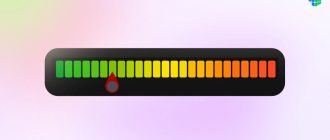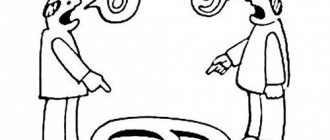Often the term “depression” is understood as a temporary deterioration in health, accompanied by despondency and depression. Depression is a condition that is caused by a combination of various factors, includes symptoms of various disorders, and refers to a mental disorder that has a negative impact on the body as a whole. The predisposition to depression is influenced by various factors - heredity, personality traits, living conditions, climate. The causes of depressive disorder are various diseases, stress and other negative factors. Each type of depression requires a special approach and treatment.
Various types of depression and other mental health disorders are treated at the Yusupov Hospital. The hospital uses various tests to identify symptoms of the disorder and diagnose the severity of depressive disorder. Doctors use the Zang, Baquet, Hamilton Anxiety and Depression Scale, the HADS Hospital Anxiety and Depression Scale, and use other diagnostic methods to assess the patient’s condition.
Five types of depressive states are classified:
- Voltage.
- Anxiety.
- Generalized anxiety.
- Anhedonia.
- Melancholy.
The state of tension is characterized by increased irritability. Anxiety is characterized by impaired concentration, impaired cognitive functions, frequent heart palpitations, and memory deterioration. Generalized anxiety has signs of anxiety, the patient is worried about a rapid heartbeat, increased sweating, difficulty concentrating and other disorders. Anhedonia is characterized by a change in the patient’s quality of life - he loses interest in life, becomes indifferent, apathetic, and loses interest in communicating with people. Melancholy is characterized by disruption of the patient’s social contacts, melancholy and melancholy.
Hospital Depression Scale HADS
The hospital scale consists of two parts - anxiety and depression, contains 14 points. Each part of the hospital scale is scored separately using total scores. HADS Hospital Depression Scale, Part One, Anxiety Level:
- I feel tense and anxious.
- Constantly - 3.
- Often - 2.
- Sometimes - 1.
- I don’t feel it – 0.
- I feel fear, anticipation of misfortune.
- I feel great fear - 3.
- There is fear, but it is not great - 2.
- Sometimes - 1.
- I don’t feel it – 0.
- Constantly - 3.
- Very often - 2.
- Sometimes - 1.
- Not disturbed - 0.
- I can’t relax - 3.
- I can relax very rarely - 2.
- I can probably relax - 1.
- I can relax - 0.
- Very often - 3.
- Often - 2.
- Sometimes - 1.
- I never experience it - 0.
- Constantly - 3.
- This is probably true - 2.
- This is partly true - 1.
- Doesn't bother me - 0.
- Very often - 3.
- Often - 2.
- Rarely - 1.
- I don’t feel a sense of panic - 0.
HADS Hospital Depression Scale, Part Two, Level of Depression:
- I feel the same pleasure as before.
- I don’t feel it - 3.
- I experience it to a small extent - 2.
- I’m probably experiencing - 1.
- Very often I experience - 0.
- Not capable - 3.
- Sometimes - 2.
- This is probably true - 1.
- Yes, that's right - 0.
- I don’t feel it - 3.
- Very rarely 2.
- I periodically experience - 1.
- Most of the time I feel cheerful - 0.
- Didn't - 0.
- Sometimes - 1.
- Often - 2.
- Almost constantly - 3.
- I take care of my appearance - 0.
- I began to pay less attention to appearance - 1.
- I pay very little attention to my appearance - 2.
- This is definitely true - 3.
- I don’t think so - 3.
- Much less often than before - 2.
- Not to the same extent as before - 1.
- Nothing has changed, everything is still 0.
- Very rarely - 3.
- Rarely - 2.
- Sometimes - 1.
- Often - 0.
During the survey, the doctor notes the patient’s answers; after the survey, he calculates points and interprets the results for each part of the questionnaire separately. The severity of the depressive state is determined by the number of points:
- From 0 to 7 is the norm.
- From 8 to 10 – subclinical severe symptoms.
- A score of 11 or more indicates clinically significant symptoms of the disorder.
Depending on the number of points in two parts of the questionnaire, the degree of anxiety and severity of depression are determined:
- Anxiety scale 10 points, depression scale 7 points – subclinically expressed symptoms of anxiety, absence of symptoms of depression.
- Anxiety scale 10 points, depression scale 15 points - subclinically expressed symptoms of anxiety, clinically expressed symptoms of depression.
Description of the technique
The scale was developed by Zigmond AS and Snaith RP in 1983 to identify and assess the severity of depression and anxiety in general medical practice. The advantages of the discussed scale are its ease of use and processing (filling out the scale does not require a long time and does not cause difficulties for the patient), which makes it possible to recommend it for use in general somatic practice for the primary identification of anxiety and depression in patients (screening). The questionnaire has high discriminant validity for two disorders: anxiety and depression. For a more detailed qualification of the condition and tracking its further dynamics, it is recommended to use more sensitive clinical scales (for example, the Hamilton Depression Scale, the Hamilton Anxiety Scale, the Montgomery-Asberg Depression Scale, the Beck Depression Inventory, the Covey Anxiety Scale, the Beck Anxiety Scale.
When forming the scale, the authors excluded symptoms of anxiety and depression that could be interpreted as a manifestation of a somatic illness (for example, dizziness, headaches, etc.). The depression subscale items were selected from a list of the most common complaints and symptoms and reflect predominantly the anhedonic component of depressive disorder. The anxiety subscale items are based on the corresponding section of the standardized clinical interview Present State Examination and the personal clinical experience of the authors and reflect predominantly psychological manifestations of anxiety.
Major Depression Questionnaire: Zung Depression Scale
The Zung scale for determining the level of depression (Zung) was developed in the middle of the last century. The Zung Self-Assessment Depression Scale allows you to measure parameters of mood, mental emptiness, irritability, indecisiveness, psychomotor and somatic symptoms of depression, and suicidal tendencies. The Zung scale for depression contains 20 items, ten of which are negative and ten are positive. Under each item there are four answer options, scored from 1 to 4.
Part II (assessing the level of DEPRESSION)
The scale is made up of 14 statements and includes two parts: anxiety (Part I) and depression (Part II)
For interpretation, it is necessary to sum up the scores for each part separately:
- 0-7 points is normal (absence of significantly expressed symptoms of anxiety and depression)
- 8-10 points subclinical anxiety/depression
- 11 points and above clinically significant anxiety/depression For example: on the anxiety scale it turned out to be 11 points, on the depression scale - 3 points. It can be concluded that there is clinically significant anxiety, and the level of depression is within normal limits.
Or: on the anxiety scale it turned out to be 15 points, on the depression scale - 9 points. We can conclude that there is clinically pronounced anxiety and subclinically expressed depression.
Or: on the anxiety scale it was 6 points, on the depression scale 7 points. We can conclude that the levels of both anxiety and depression are within normal limits (i.e., there is no need to sum the scores of each part together!)
Each statement has 4 answer options. Choose the answer that matches your condition, and then add up the points.
Geriatric Depression Scale
The Geriatric Depression Scale is a test used to assess the mental health of older adults. The test was developed in the early 80s of the last century by scientists from the USA. The test includes 30 questions, the answers to which allow you to assess depressive disorders in older people. At the same time, there are difficulties in differentiating depression from dementia, which is often accompanied by depressive disorders. A comprehensive examination is required to make an accurate diagnosis.
Before you take the online depression and anxiety test:
- It should be emphasized that self-rating scales are valid for screening purposes only; the final diagnosis should be based on a clinical examination process.
- The test results and its interpretation will be stored on a unique page created just for you. Add it to your bookmarks so you can share the data obtained with a specialist or check the dynamics of your condition later.
- Please read each group of statements and choose the answer that most closely describes how you have been feeling during the past week. Don't think too long: there are no right or wrong answers in the test. Your first reaction will probably be more accurate than the answer you get after much thought:
Treatment of depression in Moscow
Depression is the most common mental disorder; undiagnosed depression can be fatal. Various clinics, institutes and specialized hospitals provide treatment for depressive conditions in Moscow. At the Yusupov Hospital, patients can undergo a comprehensive examination, including tests for elderly patients and adolescents. The hospital specializes in the treatment of neurological diseases, dementia, Alzheimer's disease and other disorders. The hospital is equipped with modern diagnostic equipment, and consultations are conducted by specialists with extensive experience. All types of diagnostic tests to assess psychological health can be taken at the Yusupov Hospital. You can make an appointment with a doctor by calling the clinic.
Pros and cons of the method
Factor analysis resulted in a two-factor structure of the HADS in most cases. However, this is a matter of debate as several studies have also found a one- or three-factor structure.
How do you know if you have an anxiety disorder and not just regular anxiety?
Even though factorial validity has not been conclusively clarified at this time, a number of recent publications provide support for a two-factor structure. Reliability testing of the HADS has yielded good results and indicates high internal consistency of the scale.
Subsequent studies of psychosocial and therapeutic interventions have examined sensitivity to scale change. In psychodiagnostics, comparison of different screening tools is of particular interest. HADS is often compared to other tools as a relatively new method.
It is novelty that poses a challenge regarding its capabilities and applicability, especially in detecting depressive episodes. It remains unclear whether this is an advantage in terms of therapeutic approaches or prognosis.
However, HADS is gaining recognition among other tools, and its position in psychodiagnostics is strengthening. There are a number of published studies of HADS in different patient groups. Almost all areas of physical medicine show results with HADS. Particular attention is paid to cardiology and oncology patient groups.
In addition to purely epidemiological data, many studies have examined correlations between somatoform disorders in various diseases and some of the psychosocial measures studied.
On the one hand, especially mortality studies have shown a high correlation with depression in cardiac patients. On the other hand, it is worth mentioning those studies that have shown a positive correlation between individual somatic complaints, noticeable mental disorders and the corresponding limited quality of life of patients.
In addition, the HADS is increasingly used in follow-up assessments during psychosocial or psychotherapeutic interventions or pharmacotherapeutic treatments.
As research into new drugs intensifies and new drugs are introduced to patients, there will be greater interest in testing treatment outcomes or progress using measurement methods. All studies usually have the goal of establishing a psychodiagnostic in somatic medicine if there is a suspicion of a comorbid mental disorder, and then providing the necessary, intensive and individualized further diagnosis and the best therapy.
Zang scale (adapted by T.I. Balashova)
The Zang Self-Rating Depression Scale helps detect early psychological deterioration. The scale covers all the main aspects of human life. It is also called the Zung Depression Scale. This is the same questionnaire for identifying psychological problems. Since the author’s surname is foreign, you can sometimes come across the name Zung Depression Scale. It was developed at an American university in 1965.
The Zung Depression Test has translations into many languages. In addition to translation, the questionnaire needs some adaptation to the country where the diagnosis will be carried out. In Russia, this work with a depression scale was carried out by T. I. Balashova.
There are only 20 questions and they can be conditionally divided into two groups - positive and negative statements. Answers are scored from one to four and then added together. All answers are differentiated into 4 categories: 1) occasionally or not, 2) sometimes, 3) often, 4) always or constantly.
We recommend reading: Dry mouth: causes
You can take the Zang Self-Rating Depression Scale online:
1. I'm depressed and sad
- occasionally or not – 1 point;
- sometimes – 2;
- often – 3;
- constantly – 4.
2. I feel better in the morning.
- occasionally or not – 4;
- sometimes – 3;
- often – 2;
- always – 1.
3. I'm on the verge of tears or whiny.
- occasionally or not – 1 point;
- sometimes – 2;
- often – 3;
- constantly – 4.
4. I have trouble sleeping
- occasionally or not – 1 point;
- sometimes – 2;
- often – 3;
- constantly – 4.
5. My appetite has not changed
- yes, has not changed – 1 point;
- changed a little – 2;
- I have a poor appetite – 3;
- no appetite – 4.
6. I am attracted to the opposite sex.
- occasionally or not – 1 point;
- sometimes – 2;
- often – 3;
- constantly – 4.
7. I'm losing weight
- occasionally or not – 1 point;
- sometimes – 2;
- I’m noticeably losing weight – 3;
- lost a lot of weight – 4.
8. I suffer from constipation
- occasionally or not – 1 point;
- sometimes – 2;
- often – 3;
- constantly – 4.
9. I have tachycardia
- occasionally or not – 1 point;
- sometimes – 2;
- often – 3;
- constantly – 4.
10. I get tired for no reason
- occasionally or not – 1 point;
- sometimes – 2;
- often – 3;
- constantly – 4.
11. My mind is as clear as ever
- occasionally or not – 4 points;
- sometimes – 3;
- often – 2;
- constantly – 1.
12. I find it easy to cope with work
- occasionally or not – 4 points;
- sometimes – 3;
- often – 2;
- constantly – 1.
13. I am restless and restless
- occasionally or not – 1 point;
- sometimes – 2;
- often – 3;
- constantly – 4.
14. I am full of hope for the future
- occasionally or not – 4 points;
- sometimes – 3;
- often – 2;
- constantly – 1.
15. I get irritated faster than before
- occasionally or not – 1 point;
- sometimes – 2;
- often – 3;
- constantly – 4.
16. I make decisions easily
- occasionally or not – 4 points;
- sometimes – 3;
- often – 2;
- constantly – 1.
17. I feel like I’m useful and needed by people.
- occasionally or not – 4 points;
- sometimes – 3;
- often – 2;
- constantly – 1.
18. My life is full and interesting
- occasionally or not – 4 points;
- sometimes – 3;
- often – 2;
- constantly – 1.
19. I think everyone will be better off if I disappear from this world.
- occasionally or not – 1 point;
- sometimes – 2;
- often – 3;
- constantly – 4.
20. I now rejoice in what has always made me happy before.
- occasionally or not – 4 points;
- sometimes – 3;
- often – 2;
- constantly – 1.
Interpretation of the depression test:
- 20-49 is normal;
- 50-59 – mild depression;
- 60-69 – moderate degree;
- 70 and more – heavy.











